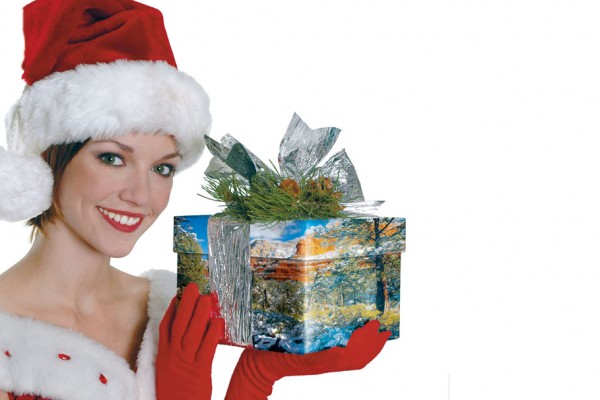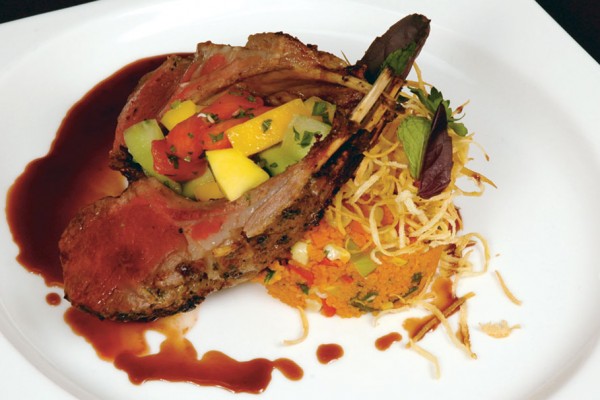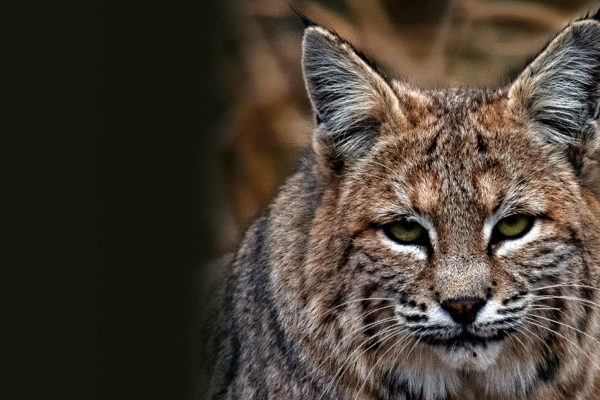Continued (page 3 of 5)
En route to the campground we take a sneak peek at two of the four waterfalls. The short trail to Navajo Falls, about 1.5 miles from the village, is unmarked, but Benny knew exactly where to take us. We hike down a sandy hill to the left of the main trail and cross a wooden bridge before reaching its 75-ft. cascade. Benny says the water ranges in temperature from 60 to 70 degrees depending on the season, and we see swimmers filling the beautiful pool at the base. Strapping on our water sandals we wade in too, excited to find the bottom was not slippery like our hometown Oak Creek. This is a good thing since the only angle for decent photos of the falls is from the pools.
Our next stop, less than half a mile away, is 100-ft. Havasu Falls, probably the most photographed of the canyon’s waterfall quartet. Travertine walls covered in green moss that look like melting faces create a backdrop for the cascade; a light spray floats in the air. The canyon narrows dramatically here, and the scenic contrast between the crashing falls, turquoise pools and sheer red rock cliffs studded with barrel cactus is startling – think Kauai meets Sedona. Suddenly, the long hike fades like a distant memory. At first, the trail is even with the top of the falls for a nice view of the pools below. It steeply descends to a side trail leading down to the concentric pools and sandy beaches that we find dotted with sunbathers.
From Havasu Falls it’s a short jaunt to the sole campground. Sites are unmarked so you are free to pitch a tent anywhere. The sweet spots are along the creek where the lulling sound of rushing water and the guttural croaking frogs mask noise from other campers and sing you to sleep. Some campers string hammocks between trees. Picnic tables appear at regular intervals and tall cottonwoods provide shade. Campfires are banned (as is alcohol) and there are no showers but there is a handful of composting toilets (Port-a-Potties) and a fresh water spring. The tribe Website recommends treating the spring water to drink; Benny says he doesn’t bother, and has never had a problem.
Benny had camp all set up when we arrived – another benefit to hiring a guide. Who wants to deal with tent poles after hiking more than ten miles? Large spiny lizards and a few mice scamper around our picnic table as night falls. Benny cooks dinner, and we retire to private tents, looking forward to exploring the waterfalls more closely in the morning.
Day Two
It’s amazing how even those of us who cherish the snooze button on the clock radio rise at the crack of dawn while camping. After a quick breakfast, we head out to revisit Navajo Falls and find it deserted – finally, Havasu Canyon just like we’d pictured it! We watch as the sun pokes above the canyon walls just enough to make the falls’ cascade shimmer. The pool surrounding the falls was the color of lapis lazuli in the shade but the early morning sunlight transforms it to its gorgeous turquoise and we can’t resist jumping in; even though the water was freezing, it was beautiful. Several natural grottos surround the falls, small minnows swim beside us; we shout to be heard over the crash of the falls. Afterward, we return to Havasu Falls and get a good laugh at the sign at the top, warning of a $500 fine for jumping – as if anyone would survive the 100-ft. jump into shallow water long enough to write a check.
We find Havasu Falls also much less crowded. We’re struck by the variety of vantage points: Walk right to the brink where the water crashes down the travertine cliff and you can look down at swimmers who seem no bigger than ants; or, you can see it from the side as the trail leads down to the swimming areas. At bottom, you can walk right up to the point where the water hits the surface, rainbows visible in the spray. Benny cautions against swimming underneath the waterfall – the falls create a whirlpool effect that has led to several drowning deaths.



